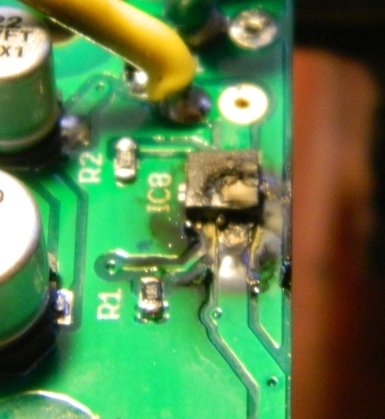Other Parts Discussed in Thread: TPS25940, TPS25942A
Working on a customer circuit that uses the TPS259270. I imported the un-encrypted PSPICE model into TINA so a TINA native model wasn't available.
In the course of fault testing, the customer intentionally connects VIN to VOUT to simulate a specific short circuit fault condition on the board that might exist in real life.
Doing so, the TPS259270 is quickly and catastrophically vaporized.
Upon simulation, a dead short seems to appear on VOUT if VIN is connected to VOUT. Here's my TINA schematic. As this uses the unencrypted model, I can't post the TINA circuit here. R3 models the short from VIN to VOUT.
The simulation shows that when EN is low, OUT appears to be shorted to ground and an excessive current flows through IIN:
Notice IIN starts up at 110A, resulting in:
PLEASE CONFIRM THESE ARE THE EXPECTED RESULTS. THIS ISN'T GOOD.


